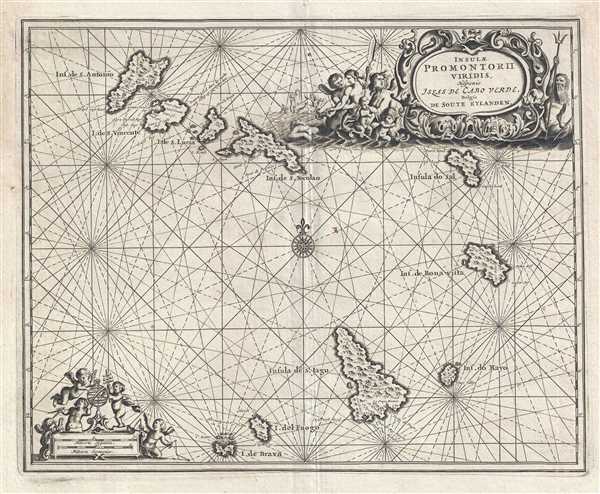1686 Dapper Map of the Cape Verde Islands
CapeVerdeIslands-dapper-1686
Title
1686 (undated) 10.25 x 12.5 in (26.035 x 31.75 cm) 1 : 1227000
Description
The Cape Verde Islands were uninhabited until the Portuguese discovered them around 1456. Portuguese settlers began arriving in 1462 and founded the first permanent European settlement in the tropics. The archipelago prospered at the height of the slave trade, and thus became a frequent target for pirates and privateers. Following the decline of the slave trade, the economy fell into a crisis. But, thanks to their position along the mid-Atlantic trade routes, the Cape Verde Islands quickly became an idea location for re-supplying ships. In 1951, Portugal changed the status of the Cape Verde Islands from a colony to an overseas province, in an effort to snuff out a growing nationalist movement. In the end, however, the Cape Verde Islands gained independence from Portugal in 1975.
Since independence, the country has developed a thriving economy. Their economy is largely service based and tourism and remittances from expatriates also play a key role. The Cape Verde Islands also strongly encourage foreign investment.
This map was produced by Olfert Dapper and published by in the French edition of Description of Africa entitled Description de L'Afrique and published in 1686.
Cartographer
Olfert Dapper (1636 - December 29, 1689) was a Dutch geographer, polyglot, and historian. Born in Amsterdam, he attended the University of Utrecht, where he was registered as a student in 1658. Two years later he began signing doctor medicinæ, but there in no evidence that he ever received any medical training or education. Dapper published a five-volume book about the history of Amsterdam entitled, Historische Beschrijving der Stadt Amsterdam and in 1665 published a Dutch translation from the Greek of the Histories of Herodotus. His best-known work, Naukeurige Beschrijvingen der Afrikaensche gewesten (Description of Africa), was published in 1668 and subsequently published in English by John Ogilby in 1670 and in French in 1686. Although Dapper never traveled to Africa, he took advantage of numerous reports from adventurers in order to compile this authoritative work over the course of three years. More by this mapmaker...

